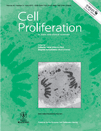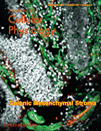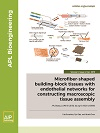
ARCHIVES ITALIENNES DE BIOLOGIE
Scope & Guideline
Advancing Biological Insights Since 1952
Introduction
Aims and Scopes
- Neurobiology and Behavioral Science:
Research exploring the underlying neurobiological mechanisms that influence behavior, cognition, and psychological conditions. This includes studies on ADHD, neuropsychological testing, and the effects of light on brain function. - Nutraceuticals and Dietary Impact:
Investigations into the role of dietary supplements and natural products (nutraceuticals) in health, particularly their effects on neuroprotection and recovery from injury, as seen in studies involving thymoquinone and rosmarinic acid. - Regenerative Medicine and Injury Recovery:
Research on the mechanisms and treatments that promote recovery from injuries, especially spinal cord injuries, utilizing various therapeutic approaches including cell-based therapies and biomaterials. - Environmental and Chemical Effects on Health:
Studies examining the impact of environmental toxins, such as cadmium, and their effects on biological systems, particularly in relation to neurodegeneration and cognitive function. - Audiology and Neurological Assessment:
Focused research on auditory health, including the assessment of cochlear nerve function and brainstem responses, particularly in the context of neurological disorders like COVID-19.
Trending and Emerging
- Integration of Light and Nutraceuticals in Therapy:
The combination of light therapy with nutraceuticals is emerging as a significant area of research, focusing on innovative approaches to treat conditions like retinal degeneration and promote neuroprotection. - Neurodegeneration and Protein Dynamics:
There is a growing interest in understanding the role of proteins and their dynamics in neurodegenerative diseases, as evidenced by studies on alpha-synuclein and exosomes, indicating a deeper investigation into molecular mechanisms. - Regenerative Strategies for CNS Injuries:
Research into regenerative approaches for central nervous system injuries, particularly spinal cord trauma, is increasingly prominent, highlighting advances in biomaterials and cellular therapies. - Impact of Environmental Factors on Neurological Health:
A trend towards studying the effects of environmental toxins on neurological health suggests a broader ecological perspective in biological research, linking environmental exposure to cognitive and behavioral outcomes.
Declining or Waning
- Psychological Stress Studies:
Research on psychological stress detection through physiological measures has decreased, indicating a potential shift towards more direct neurobiological investigations rather than relying solely on psychological assessments. - Traditional Pharmacological Studies:
The exploration of classical pharmacological agents appears to be less prevalent, with a noticeable shift towards examining the effects of nutraceuticals and natural compounds. - General Health and Marketing Research:
Studies that combine health with marketing perspectives or personality traits in sales contexts have become less frequent, suggesting a narrowing focus on more strictly biological and medical research themes.
Similar Journals

Neurochemical Journal
Innovating Understanding of Neurochemical ProcessesNeurochemical Journal, published by MAIK NAUKA/INTERPERIODICA/SPRINGER, focuses on the dynamic and rapidly evolving field of neurochemistry, providing insights into cellular and molecular neuroscience. Despite the discontinuation of its coverage in Scopus, the journal remains a valuable resource for researchers and professionals seeking to explore the biochemical underpinnings of neural function and pathophysiology. With an ISSN of 1819-7124 and an E-ISSN of 1819-7132, the journal aims to publish rigorous research articles, reviews, and notes that push the boundaries of our understanding of neurochemical processes. With a ranking that places its subjects in the lower quartile of their respective fields, Neurochemical Journal offers a platform for innovative studies and discussions among up-and-coming scientists, making it a crucial outlet for advancing the discourse in this critical area of biomedical research.

Life Science Alliance
Bridging Gaps in Biochemistry, Ecology, and Beyond.Life Science Alliance, published by LIFE SCIENCE ALLIANCE LLC, is a premier open access journal that has been making significant contributions to the fields of Biochemistry, Genetics and Molecular Biology, Ecology, Health, Toxicology and Mutagenesis, and Plant Science since its inception in 2018. With an impressive ranking in Scopus, including Q1 quartile positions and high percentiles in relevant categories, this journal is a vital resource for researchers, professionals, and students alike who seek to advance knowledge and innovation in life sciences. The journal operates on an open access model, ensuring that research findings are freely available to the global scientific community, thereby enhancing the visibility and impact of published work. With a commitment to fostering collaboration and disseminating high-quality research, Life Science Alliance serves as an essential platform for the promotion and exchange of scientific knowledge, aiming to bridge gaps and stimulate discussions across multiple disciplines.

CELL PROLIFERATION
Unlocking the Mysteries of Cell Growth and DivisionCELL PROLIFERATION, published by Wiley, is a leading open-access journal that has been at the forefront of research since its inception in 1968. With an impact factor that solidifies its position in the Q1 category of both Cell Biology and Medicine (Miscellaneous), this journal serves as a premier platform for disseminating groundbreaking studies in the field of cellular and molecular biology. The journal is renowned for its rigorous peer-review process and comprehensive coverage of topics related to cell growth, division, and differentiation, making it an invaluable resource for researchers, professionals, and students alike. With its notable Scopus ranking of #30 in Biochemistry, Genetics, and Molecular Biology: Cell Biology, and a robust open access model since 2019, CELL PROLIFERATION ensures that cutting-edge research is accessible to a global audience, fostering collaboration and innovation across the scientific community. Located in the United Kingdom, the journal remains committed to enhancing the understanding of cellular processes, thereby influencing developments in medicine and biotechnology.

JOURNAL OF CELLULAR PHYSIOLOGY
Elevating Understanding of Cellular MechanismsJOURNAL OF CELLULAR PHYSIOLOGY, published by Wiley, is a leading peer-reviewed journal that has been at the forefront of cellular research since its inception in 1945. With its prestigious Q1 and Q2 rankings in the fields of Clinical Biochemistry and Cell Biology, this journal is highly regarded within the scientific community, reflecting its significant impact factor and rigorous peer-review process. Addressing the intricacies of cell function and physiology, it serves as a crucial resource for researchers, professionals, and students dedicated to advancing knowledge in the life sciences. The journal publishes cutting-edge research articles, integral reviews, and significant findings that bridge basic biology and clinical applications, ensuring access to high-quality scholarly content that informs current practices and future research directions. Although not open access, the journal maintains a rich archive of studies, making it an essential reference point for those invested in the health and biological sciences.

APL Bioengineering
Innovating at the Intersection of Science and MedicineAPL Bioengineering is a premier open-access journal published by AIP Publishing, dedicated to advancing the field of bioengineering and its interdisciplinary applications. Established in 2017, this journal serves as a vital platform for researchers, professionals, and students interested in the critical intersections of bioengineering, biomaterials, biomedical engineering, and biophysics. With an impressive impact factor and consistent rankings in the Q1 category across multiple domains, including biochemistry and materials science, APL Bioengineering has positioned itself among the top journals in its field. The journal aims to publish innovative original research, comprehensive reviews, and insightful case studies that further the understanding and application of bioengineering principles. Since its inception, APL Bioengineering has fostered a community of thought leaders, providing open access to ensure broad dissemination of knowledge and advancements that underpin the future of biomedical innovation.

IN VITRO CELLULAR & DEVELOPMENTAL BIOLOGY-ANIMAL
Innovating Insights into Animal BiologyIN VITRO CELLULAR & DEVELOPMENTAL BIOLOGY-ANIMAL, published by SPRINGER, is a pivotal journal in the fields of cell biology and developmental biology, focusing on in vitro studies that enhance our understanding of animal cellular mechanisms and development. With an ISSN of 1071-2690 and an E-ISSN of 1543-706X, this esteemed journal offers a platform for researchers to present their findings and contribute to the body of knowledge necessary for advancements in biological sciences. As a recognized publication, it holds a 2023 category quartile of Q4 in Cell Biology and Developmental Biology, and Q3 in miscellaneous Medicine, reflecting its competitive position yet inviting critical submissions that can span multidisciplinary approaches. Though currently not open access, it serves as an essential resource for professionals, researchers, and students dedicated to unraveling the complexities of cellular processes in an ever-evolving field. The journal has been continuously published since 1986, signifying its long-standing commitment to fostering scientific discourse and innovation.

BEHAVIOURAL NEUROLOGY
Advancing Understanding: Bridging Neurology and PsychologyBEHAVIOURAL NEUROLOGY is a distinguished open-access journal published by Hindawi Ltd, dedicated to advancing the field of neurology and neuropsychology since its inception in 1988. With ISSN: 0953-4180 and E-ISSN: 1875-8584, this journal provides a platform for innovative research and interdisciplinary studies that explore the intricate connections between behavior and neurological processes. Housed in the Netherlands, BEHAVIOURAL NEUROLOGY enjoys a commendable reputation, boasting impressive quartile rankings of Q2 in various medical and psychological categories, reflecting its significant contribution to the literature with a focus on clinical neurology and physiological psychology. The journal's rigorous peer-review process ensures that published works meet high academic standards, making it an essential resource for researchers, clinicians, and students seeking to deepen their understanding of neurological disorders and cognitive function. As of 2023, it ranks in the 80th percentile in neuropsychology, further underscoring its impact and relevance in the scientific community. For those interested in accessible knowledge, BEHAVIOURAL NEUROLOGY's commitment to open access facilitates the dissemination of groundbreaking research, allowing a wider audience to engage with critical advancements in the field.

CELL AND TISSUE RESEARCH
Elevating Understanding of Tissues and Cells Since 1924CELL AND TISSUE RESEARCH, published by Springer, is a premier journal dedicated to advancing the field of cell biology, histology, pathology, and forensic medicine. With a proud history dating back to its foundation in 1924 and continuing its legacy, this journal has established itself as a vital source for innovative research, facilitating the dissemination of significant findings that contribute to the understanding of cellular and tissue dynamics. Hailing from Germany, the journal exhibits an impressive standing in the academic community with a 2023 impact factor reflected in its category quartiles: Q2 in Cell Biology, Q1 in Histology, and Q1 in Pathology and Forensic Medicine. It ranks notably within multiple Scopus categories, including 32/208 in Pathology and Forensic Medicine and 13/62 in Histology, showcasing its high percentile rankings of 84th and 79th, respectively. Researchers, professionals, and students benefit from its extensive coverage and rigorous peer-review process that ensures the integrity and relevance of its published works, thus making it an essential resource in the scientific community. While it operates under a subscription model, its commitment to quality and impact makes it an indispensable journal for anyone engaged in cellular and tissue research.

JOURNAL OF MOLECULAR HISTOLOGY
Innovating research in histology and medicine.The Journal of Molecular Histology, published by Springer, stands at the forefront of multidisciplinary research in cellular and molecular histology, offering vital contributions in the fields of Cell Biology, Histology, and Medicine. With an ISSN of 1567-2379 and an E-ISSN of 1567-2387, this peer-reviewed journal has maintained its commitment to advancing knowledge since its inception in 2004 and continues to thrive into 2024. The journal, located in The Netherlands, boasts a robust impact within its categories, currently holding Q3 rankings in Cell Biology and Q2 rankings in Histology, Medicine, and Physiology, highlighting its relevance to academics and professionals alike. With Scopus rankings that reflect a strong percentile presence across multiple fields, the journal emphasizes open access options to enhance the dissemination of critical research findings. As a valuable resource for researchers, professionals, and students engaged in molecular exploration, the Journal of Molecular Histology fosters innovation and collaboration, making significant impacts on our understanding of tissue structure and function.

Cells, published by MDPI in Switzerland, is a leading open-access journal that has been disseminating groundbreaking research in the fields of Biochemistry, Genetics, and Molecular Biology since its inception in 2011. With an impressive E-ISSN of 2073-4409, the journal boasts a strong impact factor and ranks in the 84th percentile for Scopus ratings, underscoring its significance in advancing scientific knowledge. As a Q1-ranked journal in both 2023 and 2020, it serves as a premier platform for researchers, professionals, and students eager to explore innovative findings and methodologies. By providing unrestricted access to high-quality research, Cells plays a pivotal role in facilitating collaboration and inspiration within the global scientific community, making it an indispensable resource for anyone interested in cutting-edge discoveries in cellular biology.